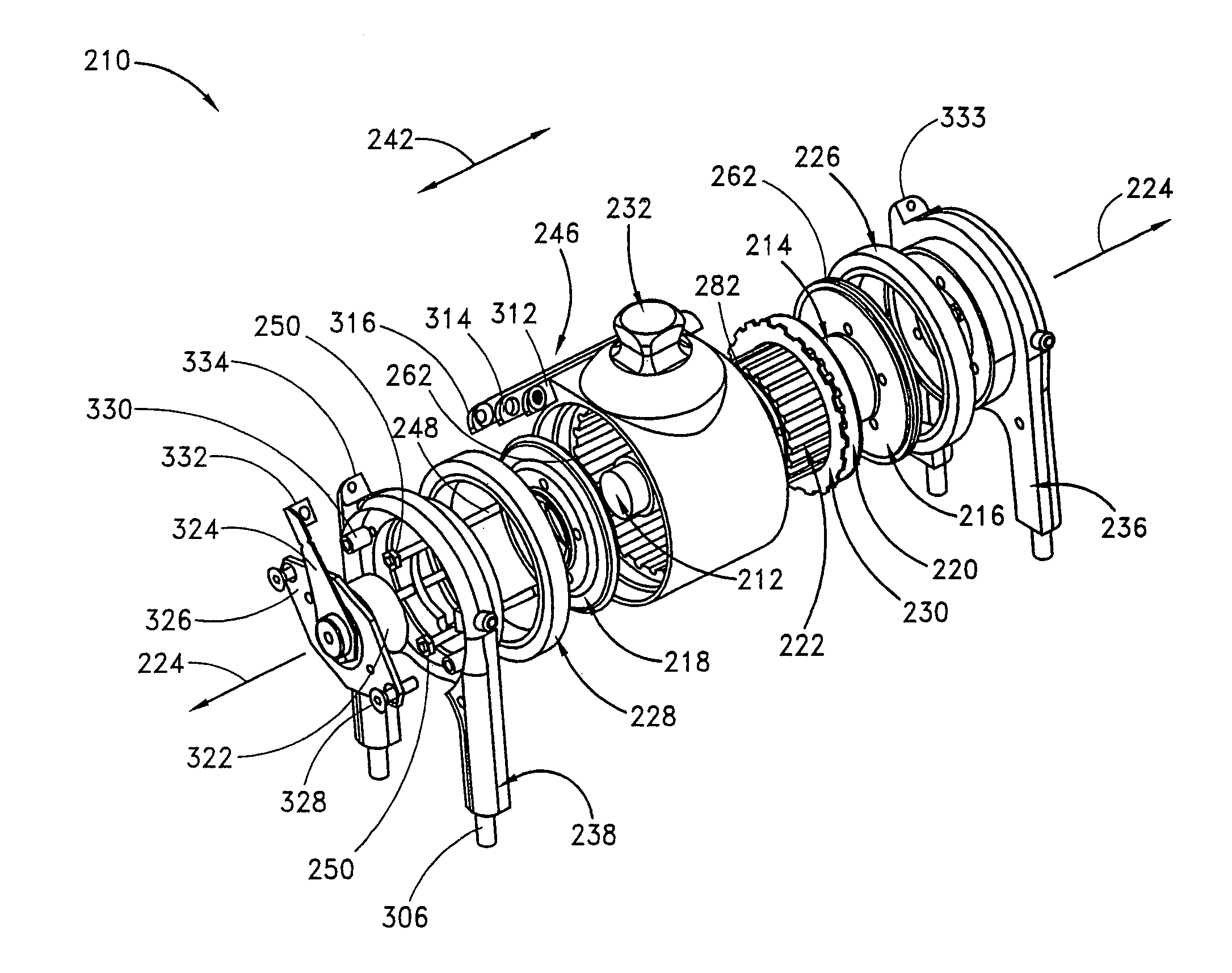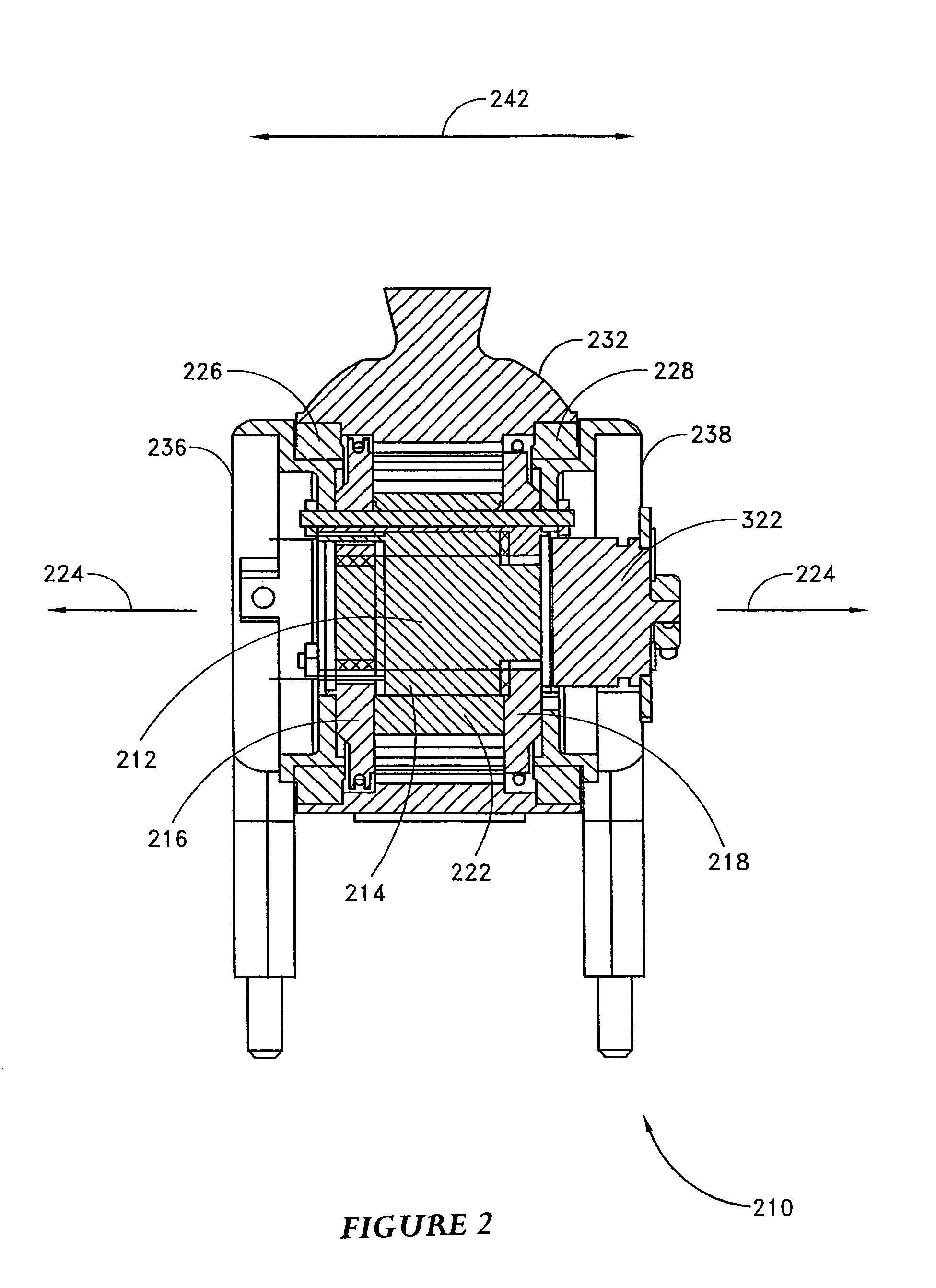Magnetorheological fluid compositions and prosthetic knees utilizing same
a technology of magnetorheological fluid and prosthetic knee, which is applied in the direction of magnetic bodies, other chemical processes, prostheses, etc., can solve the problems of changing frictional characteristics, difficult control, and unreliable damping performan
- Summary
- Abstract
- Description
- Claims
- Application Information
AI Technical Summary
Benefits of technology
Problems solved by technology
Method used
Image
Examples
example 1
MR Fluid Preparation
[0053]To prepare the MR fluid, the additives were mixed with the carrier fluids and stirred. Carrier fluid was added to the iron particles and the ingredients were stirred. A Branson Digital Sonifier, Model 450, was used to disperse the iron particles in the carrier fluid. The MR fluid was then placed on the sonifier table, with the probe adjusted so that the majority of the probe was immersed in the MR fluid without touching the bottom of the mixture jar. The MR fluid was then sonicated for 1.5 minutes at 50% intensity while the sonifier table rotated. The MR fluid was checked periodically to ensure that the mixture did not become too hot. A fan was used to cool the MR fluid. Once the cycle was complete, the jar was rotated to wash down any particles that were adhered to the walls of the jar. The sonification step was then repeated two more times. Once complete, the MR fluid was removed from the sonifier and a final stir of the MR Fluid was performed to ensure t...
example 2
Prosthetic Knee MR Fluid Loading
[0054]When the MR fluids as described herein are used in combination with a prosthetic knee, for example, a knee as described in U.S. Patent Publication No. 2001 / 0029400A1, certain characteristics of the fluid as well as the knee may be desired. In one embodiment, such as shown in FIGS. 4 and 5 of U.S. 2001 / 0029400A1 and FIGS. 1 and 2 disclosed herein and described in further detail below, a knee may contain a cavity or passage for holding MR fluid between a plurality of rotors and stators. The number of rotors and stators in certain embodiments may be increased or reduced in order to alter the off-state or low-end torque properties of the MR fluid used in combination with the knee. In one embodiment, the number of rotors and stators preferably range from about 50 to about 90, preferably from about 55 to about 70, but also including about 57, 59, 61, 63, 65, 67, and ranges encompassing these amounts. The knee cavity may contain a volume of about 1 to ...
example 3
MR Fluid Settling Tests
[0083]Settling tests were conducted for thirteen different MR fluids. The rate of settling varied significantly and was found to be a function of iron particle size, the use of additives, and the viscosity of the fluids.
[0084]Procedure for Settling Tests
[0085]MR fluids were formulated by adding carrier oil, with or without an additive, to a jar containing a weighed aliquot of carbonyl iron particles. For formulations containing an additive, the additive was blended with the carrier oil prior to mixing with the iron particles. The components were mixed by hand for several minutes and then the iron particles were dispersed using high frequency ultrasonic energy supplied by a Branson Digital Sonifier, Model 450. The fluids were subjected to 2–3 cycles of ultrasonic energy, each cycle having a duration of 1.5 minutes and power amplitude of approximately 50%. The fluids were then mixed again by hand to insure complete dispersion of the iron particles. Fluids were n...
PUM
| Property | Measurement | Unit |
|---|---|---|
| size | aaaaa | aaaaa |
| size | aaaaa | aaaaa |
| size | aaaaa | aaaaa |
Abstract
Description
Claims
Application Information
 Login to View More
Login to View More - R&D
- Intellectual Property
- Life Sciences
- Materials
- Tech Scout
- Unparalleled Data Quality
- Higher Quality Content
- 60% Fewer Hallucinations
Browse by: Latest US Patents, China's latest patents, Technical Efficacy Thesaurus, Application Domain, Technology Topic, Popular Technical Reports.
© 2025 PatSnap. All rights reserved.Legal|Privacy policy|Modern Slavery Act Transparency Statement|Sitemap|About US| Contact US: help@patsnap.com



